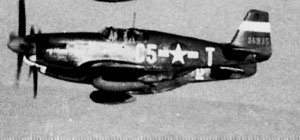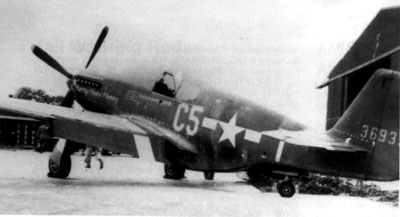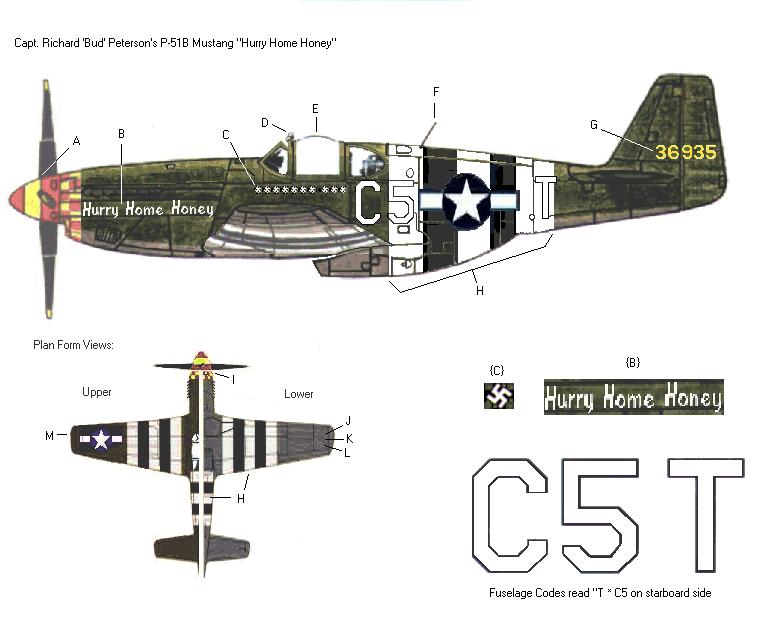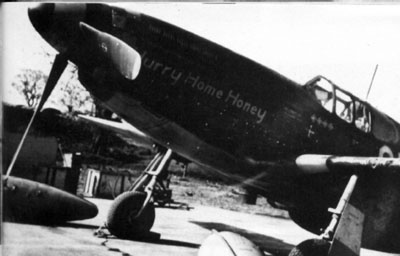357th FG Profile

Capt. Richard “Bud” T Peterson’s P-51B Mustang “Hurry Home Honey”

P-51B “Hurry Home Homey” before invasion stripes were applied.

Summer, 1944
Modeler Tips:
A. Rear red band on propeller boss extends onto spinner to leading edge of blades when in neutral pitch. Determine width of yellow band by dividing remainder of spinner evenly.
B. “Hurry Home Honey” is slightly italicized and fills the entire
lower strip panel, port side only.
C. Single row of 10 swastikas, signal pistol tube between seventh
and eighth kills.
D. Standard ETO half-sphere mirror.
E. Clear perspex Malcolm Hood retrofit canopy framework
painted dark olive green.
F. 36′ Wire whip antenna.
G. Tail Number- “36” on fin, “935” on rudder.
H. Full suite of invasion stripes, wings and fuselage-
fuselage codes completely outlined in black.
Planform View Notes:
H. (repeat from “H” above)
I. Width of checker reduced on underside in order to fit evenly on the
narrow surfaces of the chin scoop area.
J, K, L. Red, Green, Yellow navigation lights- circular and flush with wing panel.
M. Formation Lights- Red (Port) and Green (Starboard)
Overall Modeling Tips:
*This aircraft had olive drab upper surfaces, USAAC medium gray
underneath.
*After building several 357th A/C over the past 30 years, I recommend
painting the nose area forward of the exhaust cutout yellow when the flat
features are painted. Carefully cut away the yellow squares from the
checkerboard decal and apply the remaining strip of red checkers to the
nose. This method significantly reduces the potential for bubbles, and wrinkles plus it makes exact alignment of
the decal easier.
*Prior to assembly, wash clear plastic parts with a mild glass cleaner
and gently wipe dry. Then use a Q-Tip to evenly spread clear liquid floor wax (Future Brand seems to get the best results) on both inside & outside. Protect from dust and let dry for at least 2 hours. The wax fills in microscopic flaws and creates an even gloss that is clearer & shines brighter than the original plastic underneath.

Repli-Scale Decals Sheet 48-5054

